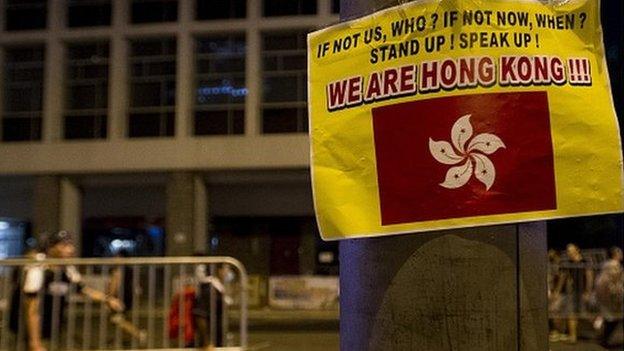Hong Kong clashes as police clear food stalls
- Published
Hundreds took part in the violent protests
Over 90 people have been injured, and 61 arrested, following clashes in Hong Kong's Mong Kok district, police say.
Violence erupted overnight as police cleared illegal food stalls set up on a busy junction for Lunar New Year celebrations.
Angry protesters threw bricks and bottles at police, while police used batons and pepper spray and fired two warning shots into the air.
Police said dozens of officers and four journalists were among those hurt.
Nine women and 52 men have been arrested, all aged between 15 and 70. They are suspected of offences including unlawful assembly, assaulting police and possession of offensive weapons.
Pictures from the scene showed protesters setting fire to bins and throwing bottles and rubbish at police.
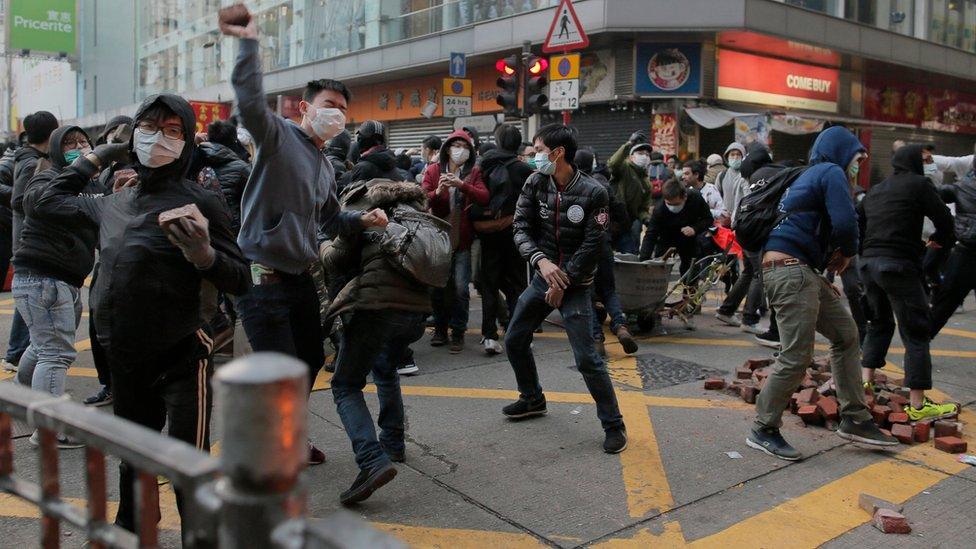
Protesters threw bricks in the clashes, which went on past dawn
It is the largest unrest in Hong Kong since massive pro-democracy street protests were held in 2014 - although some reports said Tuesday's clashes appeared more violent than those in 2014, which were largely peaceful.
Chief Executive CY Leung condemned the unrest, saying Hong Kong "can never tolerate that and the police will spare no effort to arrest the rioters".
The rioters "threw bricks and other objects at police officers, including those who had already been injured and were lying on the ground", he added.

Mong Kok clashes

The clashes broke out in the early hours of the morning
What happened in Mong Kok?
Hong Kong police attempted to shut down unlicensed food stalls along the junction of Shan Tung Road and Portland Street in Kowloon. Clashes erupted after dozens of local activists gathered to defend the vendors.
What's the deal with the food stalls?
The unlicensed food stalls were set up for the Lunar New Year holiday. Officials usually turn a blind eye to the hawkers' lack of official permits, but this year decided to crack down.
Were the clashes just about street food?
The underlying tensions go deeper. Many "localist" groups, who want greater autonomy for Hong Kong, turned up to support the vendors, arguing that Hong Kong's identity is under threat. Trust between the public and the police has also declined in recent years.
Read more: More than fishballs

Ahead of the clearance operation, hundreds of people had gathered in the area to support the hawkers.
Police said the vendors and activists were told to leave but ignored the warnings.
Clashes then broke out in the early hours, and carried on past dawn. But the scene was quiet by late Tuesday morning.

The protesters lit several fires in the streets
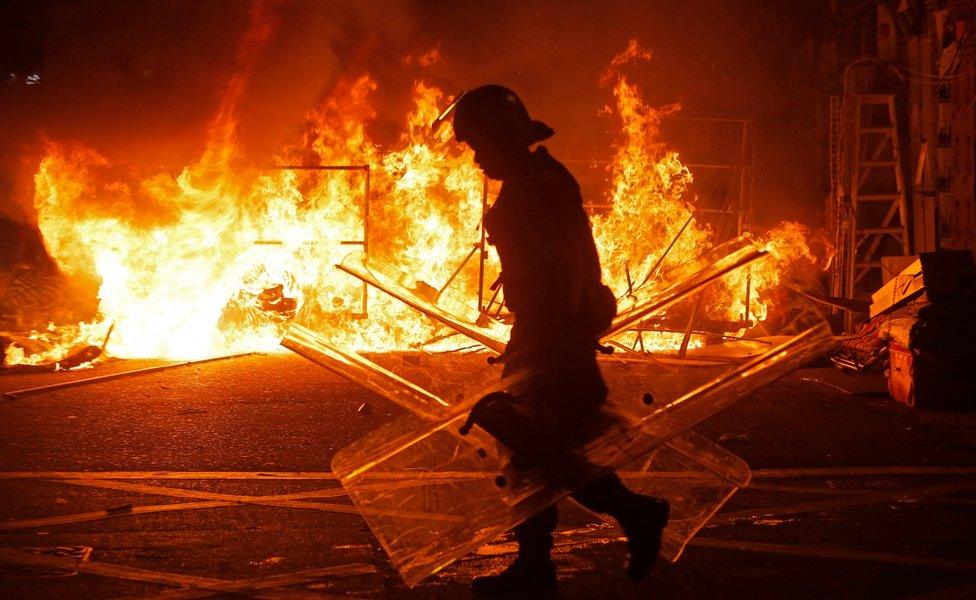
Police said they were enforcing laws against illegal hawking when the trouble began
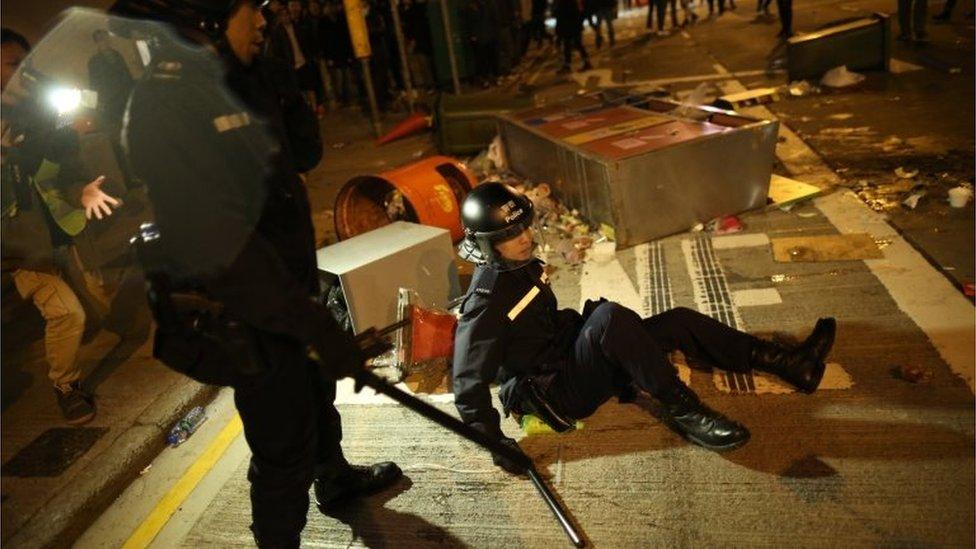
Police said dozens of officers were among the injured
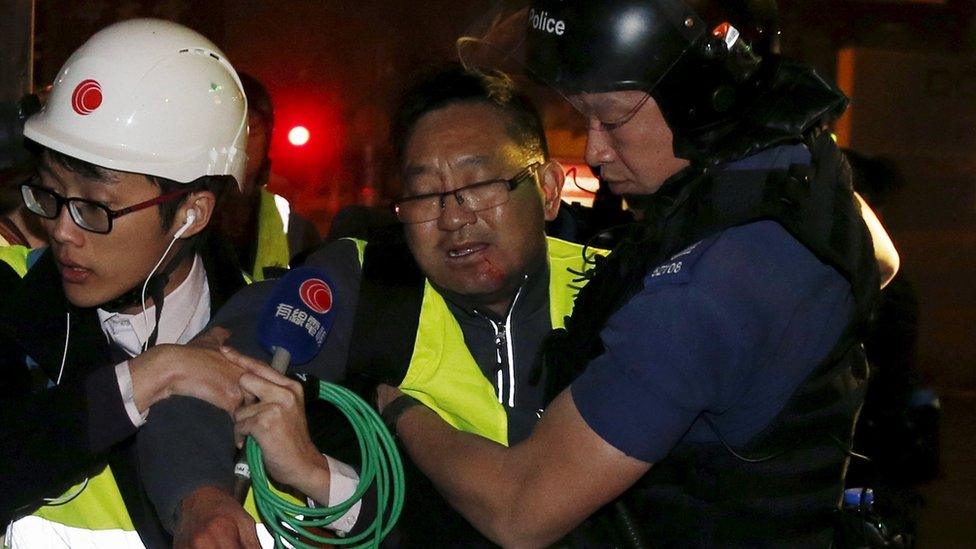
Members of the media were also hit with stones
Among the protesters were some "localist" - anti-Beijing - groups.
Baggio Leung, leader of the Youngspiration political party, told the BBC he and 10 other party members went to protest. The group said they were defending local culture.
One of them was arrested, Mr Leung said.

At the scene: Juliana Liu, BBC News, Hong Kong
Mong Kok has been a regular site for protests. The area has seen clashes at demonstrations against parallel traders, and at confrontations between localist groups and "singing aunties" (groups that gather to sing pro-China songs).
But no-one could have predicted the intensity of the clashes seen on the first night of the Chinese new year.
Activists who went to support the unlicensed hawkers told me they had anticipated a peaceful protest to defend what they believe is an integral part of local culture and tradition.
They were as shocked as anyone when the clashes escalated. But they admit the level of violence may be a game-changer for Hong Kong - and that it may give the authorities more reason to crack down on the various nativist groups.

Acting District Commander Yau Siu-kei confirmed reports that an officer had fired two warning shots into the air. He said the officer had to act to protect colleagues, the South China Morning Post, external said.
He blamed "radical elements" who brought "self-made weapons and shields" for the unrest.
The unrest was widely referenced on social media, where it was dubbed #fishballrevolution after one of the food delicacies sold by the hawkers.
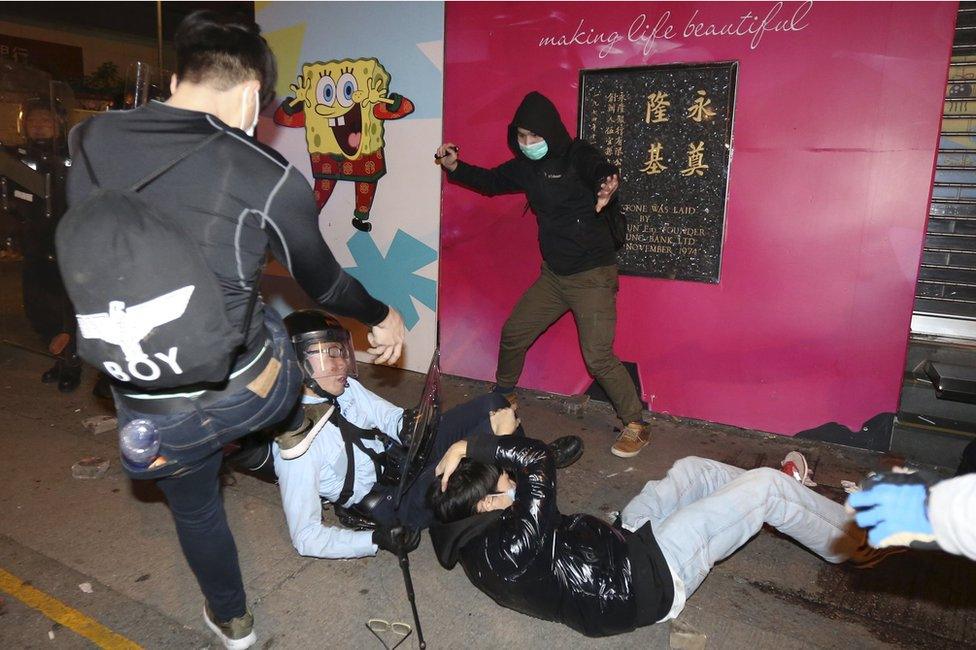
The violence has shocked many Hong Kong residents

A number of protesters were also injured

Police said protesters ignored warnings to leave the areas
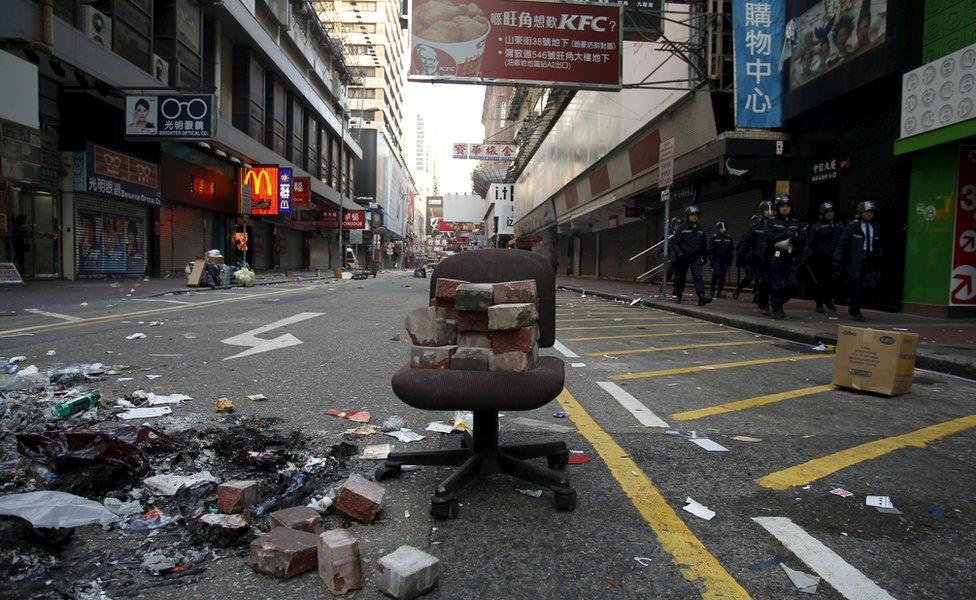
The area was left a mess once the trouble was finally over
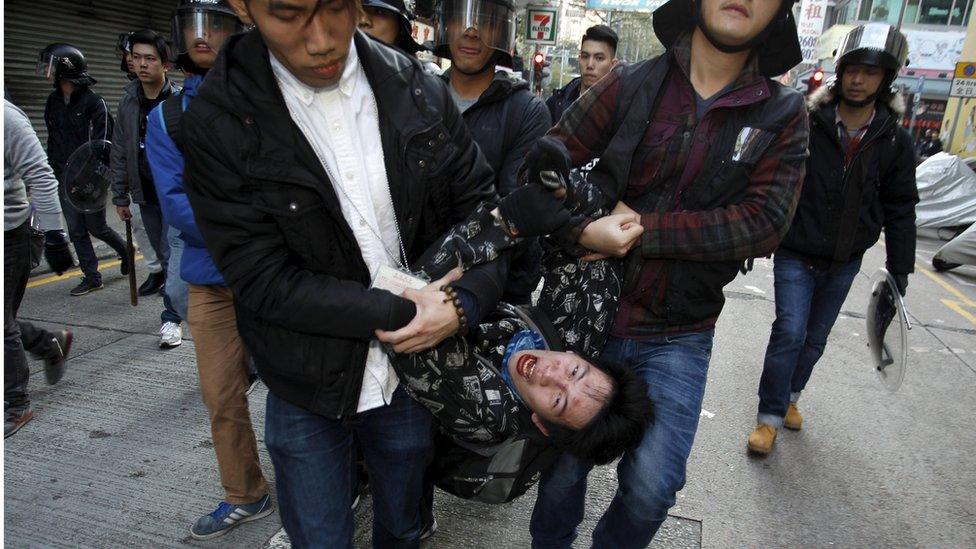
There were several arrests at the scene
- Published9 February 2016
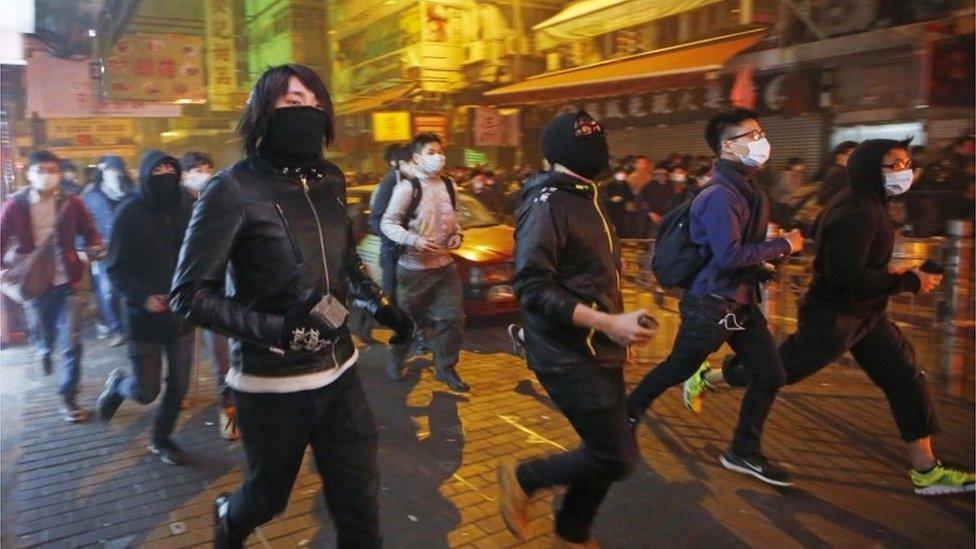
- Published7 January
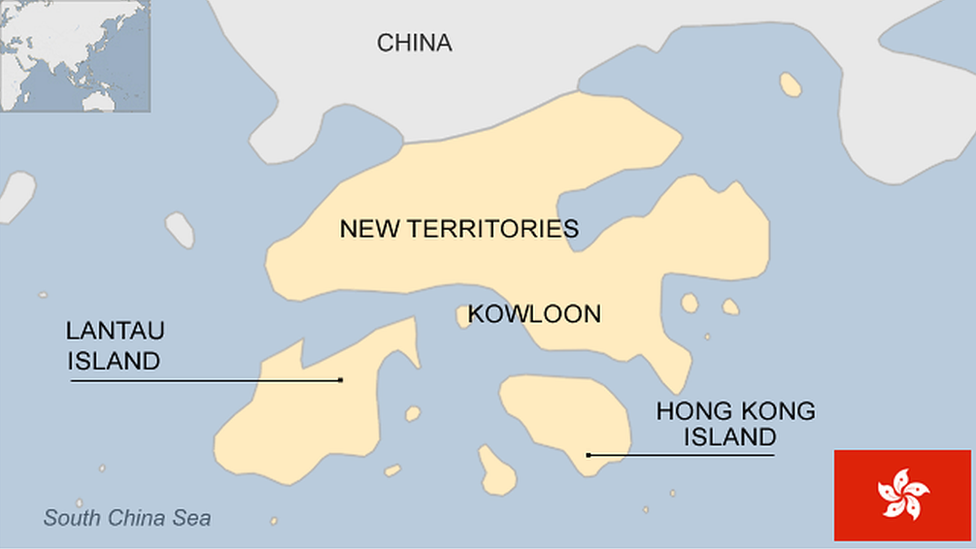
- Published18 June 2015
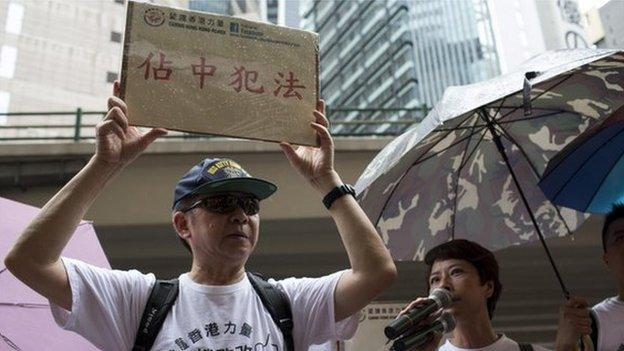
- Published1 October 2014
